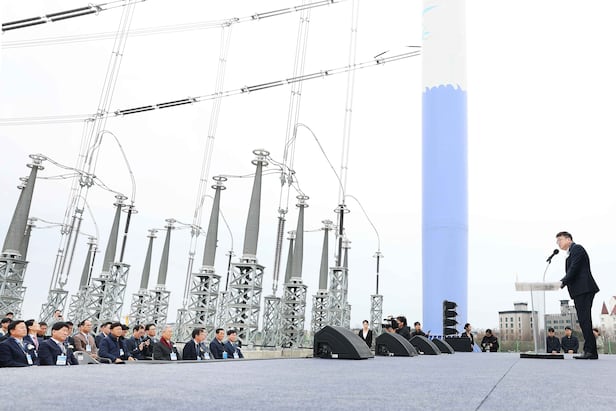South Korea completed a high-voltage transmission line linking a coal-fired power plant in Taean to semiconductor and display production facilities in the Seoul metropolitan area 22 years after the project began.

The 44.6-kilometer Bukdangjin–Shintangjeong transmission line officially went into operation on April 2, according to the Ministry of Trade, Industry and Energy. Construction of the high-voltage transmission and distribution network was delayed for 13 years due to opposition from local residents and regulatory hurdles. The project, part of the country’s broader power grid, was initially slated for completion in 2012 but was pushed back six times, earning a reputation as the nation’s most delayed transmission project.
The project was first included in the “Basic Plan for Long-term Electricity Supply and Demand” in 2003, but siting delays pushed back the project timeline. Residents and environmental groups opposed the project, citing concerns over farmland damage and disruption to migratory bird habitats. It took 11 years to finalize the site selection, and even after that, construction was frequently halted because local governments like Dangjin City refused to grant permits, wary of public resistance. The completion deadline was postponed six times in total.
The delays have cost state-run Korea Electric Power Corporation (KEPCO) more than 1 trillion won ($683 million) in losses. Unable to rely on cheaper power generated in Taean, KEPCO was forced to purchase electricity from liquefied natural gas (LNG) power plants, which are more costly. Between 2016 and 2023, the KEPCO incurred an estimated 1.17 trillion won in additional electricity purchase costs, according to the company. With the new line now operational, KEPCO expects to save around 350 billion won annually in power purchase costs.
Although the long-awaited Bukdangjin–Sintangjeong line is finally completed, grid expansion across South Korea continues to face delays. Other major projects, including the Donghae–Shingapyeong HVDC line and the 345kV Dangjin–Shinsongsan line, are also years behind schedule.



